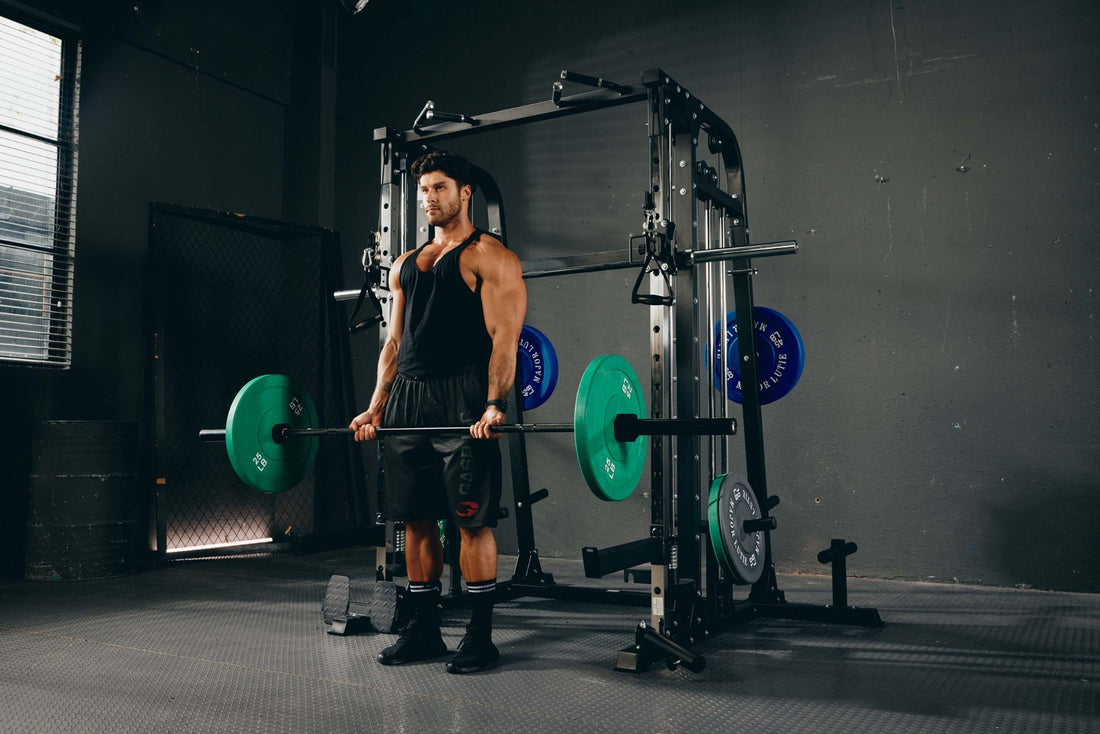
Are you ready to take your strength training to the next level but can't decide between the sumo lift and the deadlift? You're not alone. Fitness enthusiasts and strength athletes frequently find themselves torn between these two powerful exercises. Each offers unique benefits and challenges, but which one is right for you? In this article, we'll dive deep into the sumo lift vs deadlift debate to help you make an informed decision.
Understanding the Basics
What is a Deadlift?
The deadlift is a foundational strength training exercise that involves lifting a loaded barbell from the ground to the level of your hips, then lowering it back down. It's a full-body exercise that primarily targets the back, glutes, and hamstrings.
Proper Form: Stand with your feet hip-width apart, grip the barbell just outside your knees, keep your back straight, and lift the weight by extending your hips and knees simultaneously.
Pros: Builds overall strength, especially in the posterior chain.
Cons: Higher risk of back injuries if not performed with correct form.
What is a Sumo Lift?
The sumo deadlift, a variation of the traditional deadlift, features a wider stance and a narrower grip. This modification shifts the emphasis more onto the quads and the inner thighs while reducing the strain on the lower back.
Proper Form: Stand with your feet wider than shoulder-width apart, toes pointing slightly outward. Grip the barbell inside your knees, keep your back straight, and lift the weight by extending your hips and knees.
Pros: Easier on the lower back, targets different muscle groups.
Cons: May feel awkward for people with less flexibility or shorter arms.
The Muscle Groups Engaged
Both exercises are compound movements that engage multiple muscle groups, but they do so differently.
Deadlift Muscle Engagement
- Primary Muscles: Glutes, hamstrings, lower back.
- Secondary Muscles: Upper back, traps, forearms.
Sumo Lift Muscle Engagement
- Primary Muscles: Quads, inner thighs, glutes.
- Secondary Muscles: Lower back, traps, forearms.
Biomechanics and Technique
The biomechanics of each lift influence which muscles are activated, the range of motion, and the potential for injury.
Deadlift Biomechanics
The traditional deadlift has a longer range of motion and requires more hip and back extension. It places a significant load on the lower back, making proper form crucial to avoid injuries.
Sumo Lift Biomechanics
The sumo stance shortens the range of motion and brings the torso closer to the bar, reducing the load on the lower back. This makes it safer for those with back issues but requires greater flexibility in the hips and groin.

Performance and Strength Implications
Your choice between sumo lift vs deadlift can be influenced by your specific performance goals.
Developing Raw Strength
If your aim is to build raw, overall strength, the traditional deadlift is often recommended due to its extensive muscular engagement.
Improving Specific Muscle Groups
For those looking to target the quads and minimize lower back strain, the sumo lift may be the better option. It’s also beneficial for lifters who have difficulty maintaining proper form due to flexibility issues.
Energy Expenditure and Caloric Burn
Both exercises are effective at burning calories due to their compound nature. However, the traditional deadlift tends to have a slight edge due to its longer range of motion and greater overall muscular engagement.
Injury Risks and Considerations
While both exercises are generally safe when performed correctly, each comes with its own set of risks.
Deadlift Injury Risks
The primary risk with the deadlift is lower back injury, particularly if proper form is not maintained. This is often due to excessive weight or rounding of the back.
Sumo Lift Injury Risks
The sumo lift poses a lower risk to the lower back but can still lead to hip and groin injuries if performed incorrectly. Proper warm-up and flexibility exercises are essential to mitigate these risks.
Choosing the Right Lift for You
Your unique body mechanics, flexibility, and performance goals will largely dictate which lift is best for you.
Deadlift Favorability
If you have good lower back strength and flexibility, the traditional deadlift can be a tremendous asset to your strength training regimen. It’s also beneficial for those looking to build overall body strength and power.
Sumo Lift Favorability
The sumo lift may be more suitable if you have long legs, a short torso, or are prone to lower back issues. It’s also advantageous for targeting specific muscle groups like the quads and inner thighs.
Conclusion
When it comes to the debate of sumo lift vs deadlift, there's no one-size-fits-all answer. Both exercises offer unique benefits and can be incorporated into a well-rounded strength training program. Listen to your body, consider your goals, and choose the lift that complements your training needs. By doing so, you'll be well on your way to achieving your fitness aspirations.





















